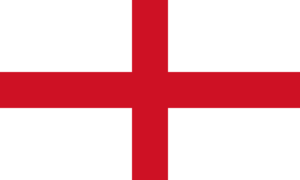- Profile
- Images
Location: [unknown]
England Project: Overview of Heraldry and Coats of Arms
This page is a reference for English heraldry only. Other countries have their own conventions.
Contents |
General Overview
1. Coats of Arms are granted to a specific person (historically mainly to men) and their blood line descendants.
A person who is entitled to bear arms is described as "armigerous" or an armiger.
There is no such thing as a general coat of arms for a surname.
If you don't have proof that a person was armigerous don't put an image of arms on their profile. If they were armigerous, make sure that you put their correct arms on their profile. (See "differencing" below)
2. No two grants of arms in England are the same. The arms are inherited unchanged by the eldest son of the person who had the original grant of arms, and thence to his eldest son. Other sons have to have small differences added to the original arms. These arms with their differences are then inherited by their eldest sons.
3. There is no such thing as a "family crest". The crest is the part of the arms above the shield.
4. Women were allowed to use the arms of their fathers while unmarried. These arms were displayed on a lozenge shape rather than a shield.
When a woman married, the arms of her father (if he had any) were "impaled" (placed side by side on the same shield) with those of her husband (but only if he was also armigerous). The husband's arms are on the left and the wife's on the right as you look at them.

|
| Impalement of husband and wife arms |
If an armigerous man had no surviving sons, his daughters became his "heraldic heiresses". These arms were then conveyed to their husbands and "quartered" together with the husband's arms. The quartered arms became the ongoing arms for that branch of the husband's family.

|
| Quartered arms of Bowes-Lyon. Husband=Lyon (top left and bottom right) Wife=Bowes was an heraldic heiress (top right and bottom left) |
An excellent primer for English heraldry is "Simple Heraldry, Cheerfully Illustrated". [1] If you are new to heraldry, this short book will give you a good grounding in how a coat of arms is constructed, the conventions used and how arms are inherited including "differencing" for younger sons.
A more in-depth reference book is "Boutell's Heraldry". [2] The excellent chapter on Marshalling (combining coats of arms by marriage between armigerous families) can help you work out the order in which the arms were combined and which families married-in. [3]
The description of a coat of arms is called a blazon. Burke's General Armoury [4] lists the blazons of the arms of the armigerous families of England in alphabetical order. You can do a reverse look-up by typing the blazon into the search box of the online version. Typing the blazon into a search engine such as google will often also reveal the owner of the arms.
Heralds Visitations
The Heralds of the College of Arms periodically visited the counties, and persons who wished to prove their right to bear arms had to bring the evidence to show the Heralds. Not every claim was upheld.
The "evidence" presented was not always accurate with incorrect names and sometimes there were generations omitted.
Think of the pedigrees in the Visitations as being like Ancestry Trees, of variable quality and often unsourced for the older generations.
The family trees often only show the elder sons (and daughters who married into another armigerous family). The most recent couple of generations in any given pedigree are generally the most accurate.
Printed versions published by the Harleian Society in the late 19th century of the pedigrees collected at the Visitations can be found online. A list of those which are online is here: The Publications of The Harleian Society
If your person of interest is included in one of the Visitations, then it is likely they were armigerous but this is not conclusive. They may be from another family without arms who married into an armigerous family. A marriage between two families, one armigerous and one not, did not give the non-armigerous family the right to use the other's arms.
Sources
- ↑ Simple Heraldry, Cheerfully Illustrated Iain Moncreiffe & Don Pottinger (1965) landing page, click to open Accessed 10 June 2023
- ↑ Boutell's Heraldry ed. J. P. Brooke-Little 6th edition 1970, London, England Internet Archive Accessed 10 June 2023
- ↑ Boutell's Heraldry as above: The chapter on Marshalling starts here on page 130. The worked example which is very informative starts here on page 141
- ↑ The general armory of England, Scotland, Ireland, and Wales; comprising a registry of armorial bearings from the earliest to the present time Bernard Burke London (1884) Internet Archive Accessed 10 June 2023
- Login to request to the join the Trusted List so that you can edit and add images.
- Private Messages: Send a private message to the Profile Manager. (Best when privacy is an issue.)
- Public Comments: Login to post. (Best for messages specifically directed to those editing this profile. Limit 20 per day.)
- Public Q&A: These will appear above and in the Genealogist-to-Genealogist (G2G) Forum. (Best for anything directed to the wider genealogy community.)

edited by Shirley Blomfield